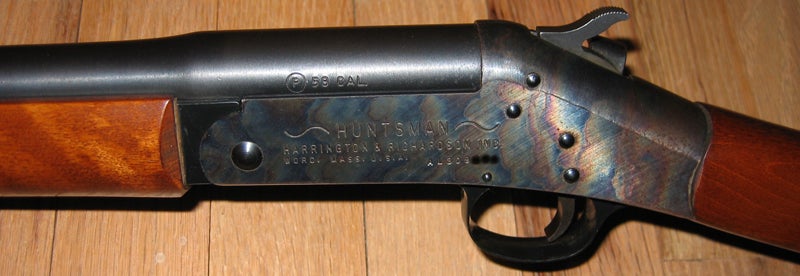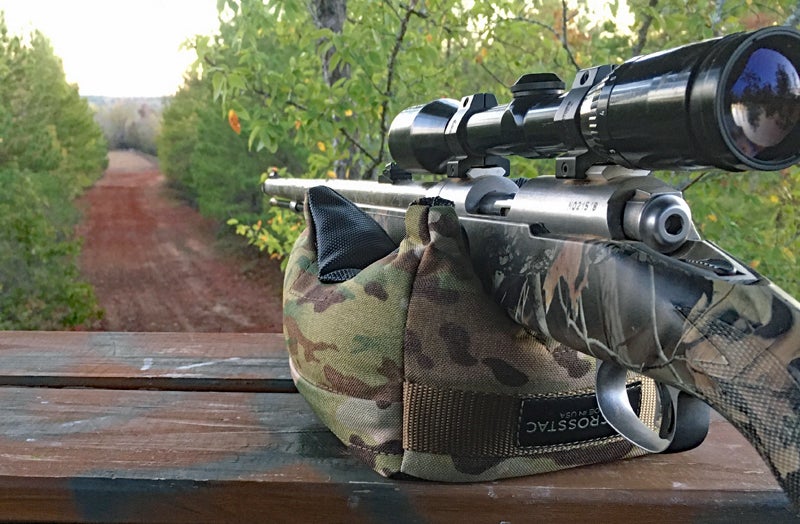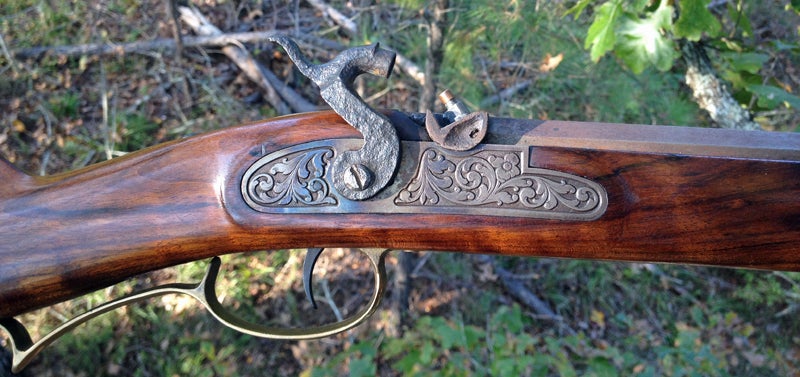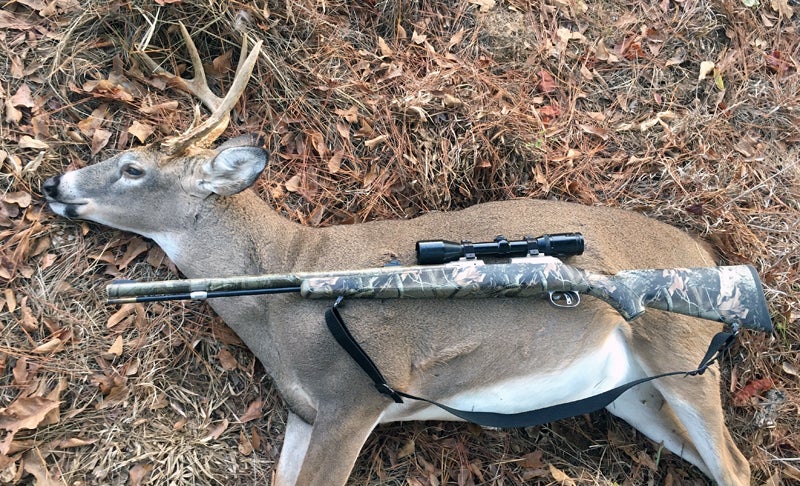Fall Muzzeloader Deer Hunting
Russ Chastain 11.04.19

Whether you hunt with an old-fashioned sidelock smokepole or a modern inline muzzleloading rifle, the challenge of hunting deer “the old-fashioned way” can be alluring for deer hunters. Not only that, it can extend your season by allowing you more hunting time — which is why most of us get into muzzleloader hunting in the first place.

(Photo © Russ Chastain)
My first muzzleloader hunt was bitter cold — if you can believe it — in my native home state of Florida. I was 13 years old and this was way back in the 1980s, and the rifle in my aching, frozen hands was an inline. It was actually an H&R Huntsman, which was pretty much a single-shot break-action shotgun with a .58-caliber rifled barrel and a slip-in breech plug where a shotgun shell would normally go. It was Dad’s spare muzzleloader, so that’s what I used.

(Photo © Russ Chastain)
From there I went to a Thompson-Center Seneca, a graceful sidelock .45-caliber rifle which was essentially a slimmer, lighter version of a Hawken. Oh, how I loved that rifle! I added a peep sight on the tang and happily hunted (and took a couple of bucks) with it, but about 15 years later the siren’s song of modern muzzleloading captured me and I bought a Savage inline that could even handle certain smokeless powders, and I topped it with a scope.

(Photo © Russ Chastain)
Decades later, I waffle between traditional muzzleloaders and modern inlines, as you know if you read my most recent deer hunting story, in which I shot deer with both types of muzzleloaders, But the upshot remains the same: Muzzleloaders give me more time in the woods hunting deer.
Old vs. New; Which is for You?
Should you use a traditional muzzleloader, or a modern inline? That question can only be answered by you. Back when I started deer hunting, inlines weren’t a thing. Yes, the H&R Huntsman existed, but it was problematic due to its collapsible ramrod, and back then muzzleloading was as much about the added challenge as it was about increased hunting time.

(Photo © Russ Chastain)
When inlines began showing up, many of us considered them a fad, but before long, it was the old sidelock guns that started to disappear from manufacturers’ catalogs. Inline muzzleloaders are usually more reliable and more weather-resistant, and make it much easier to mount a scope. The guns themselves are more familiar to most hunters who use modern rifles, so they’re easier for them to use.
But if you desire a connection with your forefathers, to feel like you’re living out history, or just want the added challenge of using a sidelock gun whose percussion cap is exposed to the elements — or even a flintlock, which is far more picky — start scouring gun-shop shelves for old-timey smokepoles. They still get the job done.
What Will I Need?
Whether your muzzleloader season comes early or late (or both), consider gearing up to hunt with a front-stuffer this year. You don’t need to break the bank buying goodies. Essentially, you’ll need these things:
- Muzzeloader
- Bullets (usually modern jacketed bullets in sabots for modern muzzleloaders; often round lead balls with cloth patches in older guns)
- Powder (I prefer good old-fashioned black powder, but there are numerous substitutes available)
- Ignition source (priming powder for flintlocks, percussion caps for sidelocks, or shotgun primers for most inlines)
- Bullet starter (for getting the projectile started into the muzzle)
- Ramrod (this should be included with — and part of — the rifle itself)
- Tools for disassembly (nipple wrench for percussion or breech plug removal tools for inline)
- Speed Loaders (for reloading in the field; I prefer the “push-through” type which is essentially a plastic tube securely capped on each end)
Beyond this, all you’ll need is your typical deer hunting gear.
Get Out There and Make Some Smoke
I can’t think of much that’s more satisfying than hunting deer on a good day, and taking a deer in a challenging way can really add to that. I’ll readily admit I’m not likely to carry a muzzleloader when it’s legal to tote a modern firearm, but you might wish to if that’s legal in your area. If you do, I wish you good luck and happy hunting.

(Photo © Russ Chastain)
What I can say for certain is that when you make a black powder boom on a nice chilly day and a cloud of white smoke hangs heavy in the air before you, you’re experiencing something few modern men and women ever do. And when there’s a nice fat whitetail in your sights when you squeeze that trigger, well that’s just icing on the cake.